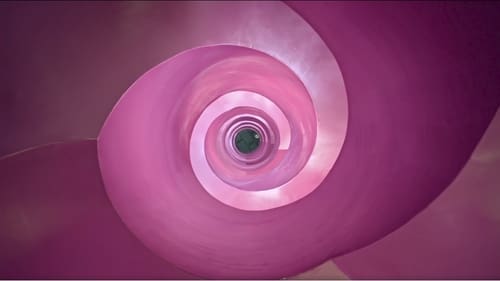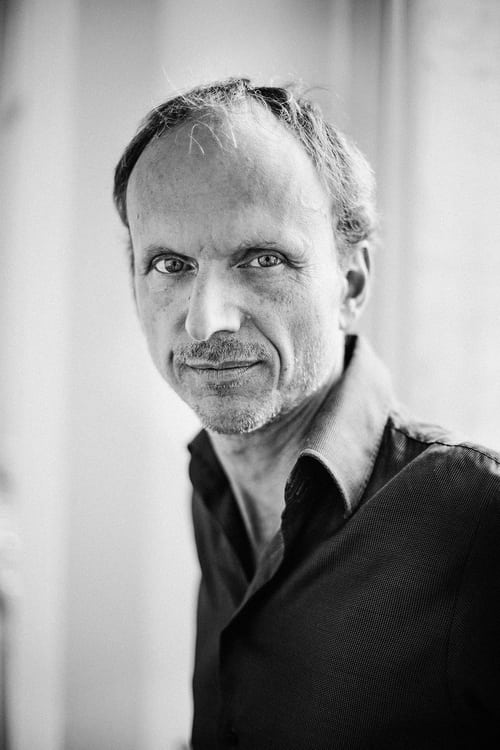Julian Rosefeldt
Nascimento : , Munich, Germany
História
Julian Rosefeldt is a German artist and filmmaker. Rosefeldt's work consists primarily of elaborate, visually opulent film and video installations, often shown as panoramic multi-channel projections. His installations range in style from documentary to theatrical narrative.

Writer
Artist and filmmaker Julian Rosefeldt creates elaborately staged films that investigate the power of language and the conventions of cinema as an allegory for societal and individual behaviors. With the multi-channel film installation Euphoria he continues this examination by exploring capitalism, colonialism, and the influential effects of unlimited economic growth in society.

Director
Artist and filmmaker Julian Rosefeldt creates elaborately staged films that investigate the power of language and the conventions of cinema as an allegory for societal and individual behaviors. With the multi-channel film installation Euphoria he continues this examination by exploring capitalism, colonialism, and the influential effects of unlimited economic growth in society.

Producer
What does the past of a distant future look like? A distant future to which humankind will be driven by the forces of neoliberal capitalism, climate change, populism, and the pervasive intrusion of one’s private sphere through digital technology? Julian Rosefeldt’s film Penumbra is not a work of science fiction. Instead, it points to our current situation, albeit within a fictious framework that paves the way for a paradoxical enigma: who will we be when we are gone?

Writer
What does the past of a distant future look like? A distant future to which humankind will be driven by the forces of neoliberal capitalism, climate change, populism, and the pervasive intrusion of one’s private sphere through digital technology? Julian Rosefeldt’s film Penumbra is not a work of science fiction. Instead, it points to our current situation, albeit within a fictious framework that paves the way for a paradoxical enigma: who will we be when we are gone?

Director
What does the past of a distant future look like? A distant future to which humankind will be driven by the forces of neoliberal capitalism, climate change, populism, and the pervasive intrusion of one’s private sphere through digital technology? Julian Rosefeldt’s film Penumbra is not a work of science fiction. Instead, it points to our current situation, albeit within a fictious framework that paves the way for a paradoxical enigma: who will we be when we are gone?

Director
A condensed version of Rosefeldt’s filmic interpretation of Joseph Haydn’s “The Creation”, “In the Land of Drought” (2015/2017) confronts the relationship between man and his impact on the world. Set to atmospheric sounds and a pulsating hum, the 43-minute piece looks back from an imagined future upon the post-Anthropocene: the aftermath of significant human influence on Earth. An army of scientists appear to investigate the archaeological remnants of civilization after humanity has made itself extinct. Shot entirely using a drone, Rosefeldt’s images hover meditatively over the desolate landscape and ruins. Connoting surveillance, the drone’s bird’s eye view removes human perspective with us onlookers kept at a distance throughout. Increasingly, more figures dressed in white lab suits emerge to inspect the ruins of civilization – which are in fact abandoned film sets close to the Moroccan Atlas Mountains.

Producer
Os históricos manifestos de arte podem ser aplicados à sociedade contemporânea? Uma homenagem às declarações artísticas e inovadoras do século XX, dos futuristas e dadaístas ao Pop Art, Fluxus, Lars von Trier e Jim Jarmusch, esta série de re-encenações interpretadas por Cate Blanchett explora os componentes performativos e o significado político dessas declarações. O filme participou dos festivais de TRIBECA, SUNDANCE e ROTERDÃ 2017.

Director
Os históricos manifestos de arte podem ser aplicados à sociedade contemporânea? Uma homenagem às declarações artísticas e inovadoras do século XX, dos futuristas e dadaístas ao Pop Art, Fluxus, Lars von Trier e Jim Jarmusch, esta série de re-encenações interpretadas por Cate Blanchett explora os componentes performativos e o significado político dessas declarações. O filme participou dos festivais de TRIBECA, SUNDANCE e ROTERDÃ 2017.

Writer
Os históricos manifestos de arte podem ser aplicados à sociedade contemporânea? Uma homenagem às declarações artísticas e inovadoras do século XX, dos futuristas e dadaístas ao Pop Art, Fluxus, Lars von Trier e Jim Jarmusch, esta série de re-encenações interpretadas por Cate Blanchett explora os componentes performativos e o significado político dessas declarações. O filme participou dos festivais de TRIBECA, SUNDANCE e ROTERDÃ 2017.

Writer
Rosefeldt’s thirteen-channel video work Manifesto questions the role of the artist in society today. Australian actor, Cate Blanchett, performs the manifestos as a series of striking monologues. The installation draws on the writings of Futurists, Dadaists, Fluxus artists, Situtationists and Dogma 95, and the musings of individual artists, architects, dancers and filmmakers. Passing the philosophies of Claes Oldenburg, Yvonne Rainer, Kazimir Malevich, André Breton, Elaine Sturtevant, Sol LeWitt, Jim Jarmusch, and other influencers through his lens, Rosefeldt has edited and reassembled a collage of artists’ manifestos.

Director
Rosefeldt’s thirteen-channel video work Manifesto questions the role of the artist in society today. Australian actor, Cate Blanchett, performs the manifestos as a series of striking monologues. The installation draws on the writings of Futurists, Dadaists, Fluxus artists, Situtationists and Dogma 95, and the musings of individual artists, architects, dancers and filmmakers. Passing the philosophies of Claes Oldenburg, Yvonne Rainer, Kazimir Malevich, André Breton, Elaine Sturtevant, Sol LeWitt, Jim Jarmusch, and other influencers through his lens, Rosefeldt has edited and reassembled a collage of artists’ manifestos.

Director
"Deep Gold" é uma homanagem à obra-prima surrealista de Luís Buñuel (e em sua época de criação, um filme escandaloso) "A Idade do Ouro", relocado para a Berlim dos anos 20. O filme funciona como uma inserção ficcional ao filme original e mostra um mundo repleto de luxúria e desejo e um frágil protagonista masculino surpreso com uma onipresente sexualidade feminina.

Director
Several scenes showing evening as it turns to night in an anachronistic take on the wild west. 5-channel Installation piece, also presented as a single video.

Director
Requiem (2007), like Clown (2005), takes place in the Brazilian jungle. Four large projections encircle the viewer, who is transported deep into the rainforest by images and sounds of buzzing insects, singing birds and raindrops falling on vegetation. They seem to emphasise the forest as a sublime, untouched, almost paradise-like space – an illusion that is dissolved when suddenly huge trees start, one after another, to collapse into the tangle of green without a trace of human involvement.

Director
The Perfectionist (2005) is the third part of Rosefeldt’s Trilogy of Failure (2004/2005) in which three different settings draw a picture of our vain entanglement with everyday rituals. In each case the protagonist is caught up in a microcosm that suggests mental and spatial claustrophobia. As a reaction to the hopeless situation, he plunges into permanent Sisyphean activity – going nowhere and producing nothing. The motifs of perpetual attempt and constant failure find their equivalent in the repetitive structure of the loop. The scenes are allegories of our frantic and ultimately futile attempts to escape the surrounding norms, constraints, structures and rituals by which we are determined.

Director
In the three-channel film installation Clown (2005), the absurd and slightly uncanny figure of a clown emerges from the impenetrable lushness of the Brazilian jungle. His red nose contrasts with the green forest. Starting from the right-hand side, he passes through all three screens, stumbling towards us, following a streamlet, before finally disappearing back into the jungle. As often in Rosefeldt’s work, this film’s protagonist is an uncommunicative, self-absorbed monad: a wanderer in a world he either does not understand or – caught up in activities required by the closed circuit of his solecistic, madcap logic – wishes to ignore. As the essence of absurdity, this film work can be read as a metaphor for modern man’s alienation from nature and an epilogue to Rosefeldt’s Trilogy of Failure.

Director
Stunned Man (2004) is the second part of Rosefeldt’s Trilogy of Failure (2004/2005) in which three different settings draw a picture of our vain entanglement with everyday rituals. In each case the protagonist is caught up in a microcosm that suggests mental and spatial claustrophobia. As a reaction to the hopeless situation, he plunges into permanent Sisyphean activity – going nowhere and producing nothing. The motifs of perpetual attempt and constant failure find their equivalent in the repetitive structure of the loop. The scenes are allegories of our frantic and ultimately futile attempts to escape the surrounding norms, constraints, structures and rituals by which we are determined.

Director
The Soundmaker (2004) is the first part of Rosefeldt’s Trilogy of Failure (2004/2005) in which three different settings draw a picture of our vain entanglement with everyday rituals. In each case the protagonist is caught up in a microcosm that suggests mental and spatial claustrophobia. As a reaction to the hopeless situation, he plunges into permanent Sisyphean activity – going nowhere and producing nothing. The motifs of perpetual attempt and constant failure find their equivalent in the repetitive structure of the loop. The scenes are allegories of our frantic and ultimately futile attempts to escape the surrounding norms, constraints, structures and rituals by which we are determined.





